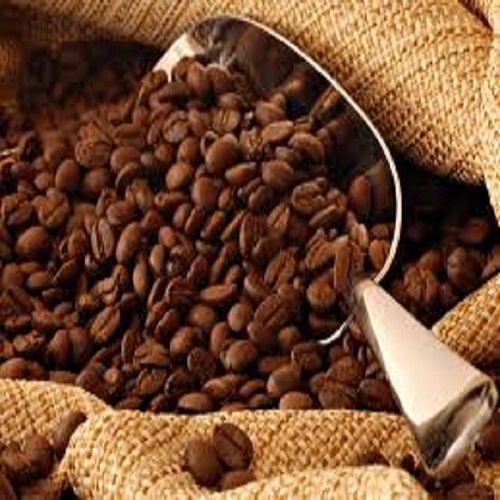To The Edge of Excessive Caffeine?
About the Regarding A lot of Caffeine?
My inspiration for scripting this article is in a reaction to the countless incidents within my clinical practice treating people with panic attacks and under-diagnosed caffeine intoxication. Every time a new client reports high anxiety it is likely to go exactly the same: Your client has session complaining of anxiety and panic symptoms with plenty of reports of panic and anxiety attacks and follow-up visits together with the psychiatrist, pleading for anti-anxiolytic medications. Many individuals havenrrrt heard of the physiological consequences of consuming too much caffeine, and exactly how they’re commonly mistaken for panic symptoms. Restlessness, nervousness, excitement, insomnia, flushed face, muscle twitching, rambling flow of speech, increased heartbeat and psychomotor agitation for example. They’re comparable to panic-like symptoms (Association, 2013).
Caffeine makes it possible to get up as it stimulates various parts of the body. When consumed, zinc increases the neurotransmitters norepinephrine within the brain, resulting in increased levels making it be alert and awake. Caffeine creates the same physiological response that you were stressed. This leads to increased amounts of activity from the sympathetic nerves and releases adrenaline. Precisely the same response you can get on the stressful commute to operate, or visiting a snake slither across the path over a hiking trip. Caffeine consumption also minimizes the volume of Thiamine (Vitamin B1) in your body. Thiamine can be a known anti-stress vitamin (Bourne, 2000).
While penning this article one morning I observed the road inside my local restaurant. The long line wrapped across the store jammed with people looking to wake up, eager for their daily caffeine fix. Many ordered large-sized coffee cups, some of which included caffeine turbo shots to help them survive their mornings. So how will we know when we’ve had a lot of caffeine? Most assume their daily caffeine intake has little if absolutely nothing to do with their daily emotional health.
Let’s talk about the number of milligrams have been in a regular average sized 8 oz cup of joe:
Instant coffee = 66 mg
Percolated coffee = 110 mg
Coffee, drip = 146 mg
Decaffeinated coffee = about 4 mg

Caffeine can be found in numerous sources apart from coffee. The common cup of tea depending on the color and also the length of time steeped contains roughly under 40 mg of caffeine per serving (Bourne, 2000).
Many popular soda drinks also contain caffeine:
Cola = 65 mg
Dr. Pepper = 61 mg
Mountain Dew = 55 mg
Diet Dr. Pepper = 54 mg
Diet Cola = 49 mg
Pepsi-Cola = 43 mg
Even cocoa has about 13 mg of caffeine per serving (Bourne, 2000). Energy drinks have high caffeine levels and may be monitored also. To learn your overall level of caffeine multiple the amount of consumed caffeinated beverages with the indicated average caffeine levels in the list above. Keep in mind that a cup equals 8 oz. Even though you’re consuming one large cup does not mean a couple of seconds counts together serving!
According the brand new Diagnostic and Statistical Manual of Mental Disorders (DSM-V) Caffeine Intoxication is often a diagnosable mental health problem. Many of the clients I treat for several anxiety-related disorders concurrently belong to the caffeine intoxication category. They eagerly seek psychiatric medication to lessen anxiety symptoms without first being assessed for lifestyle and daily stimulant consumption. The DSM-V’s criteria for caffeine intoxication is understood to be anybody that consumes a lot more than 250 mg of caffeine every day (compare your average caffeine level to 250 mg to gauge the quantity of caffeine you take in daily) (Association, 2013). After just two glasses of drip coffee you already meet the requirements for caffeine intoxication! It’s recommended that individuals without anxiety problems consume lower than 100 mg of caffeine every day. For those who have anxiety troubles you need to have 0 mg of caffeine per day so your anxiety arousal system isn’t triggered by anxiety-induced substances.
Almost all of the clients who report fighting panic attacks recall at the time they had panic or anxiety attack they usually consumed another caffeinated beverage, when compared to the days without panic disorder. After a client is assessed for caffeine intoxication among the first steps I take is always to create a behavioral plan to profit the client reduce their daily caffeine. Many my clients let me know that whenever having eliminate their caffeine they right away feel great and less anxious. When the client is as a result of 0 mg is when I could finally ascertain whether or not the anxiety symptoms are linked to anxiety, caffeine intoxication, or both.
If you qualify for caffeine intoxication there are several ways you can lower your caffeine levels. High doses (especially those within the caffeine intoxication zone over 250 mg) are greatly prone to caffeine withdrawal symptoms such as headache, fatigue, depressed or irritable mood, difficulty concentrating and muscle stiffness (Association, 2013). It’s recommended to slowly reduce your level of caffeine to lower withdrawal symptoms. For best results try lowering by one caffeinated beverage monthly (Bourne, 2000). As an example if you consume five cups of coffee per day try cutting down to four cups every day for a month, then right down to three cups every day for one more month and continue before you are at least under 100 mg or else 0 mg.
To get more information about Help With Caffeiene Addiction take a look at this website.